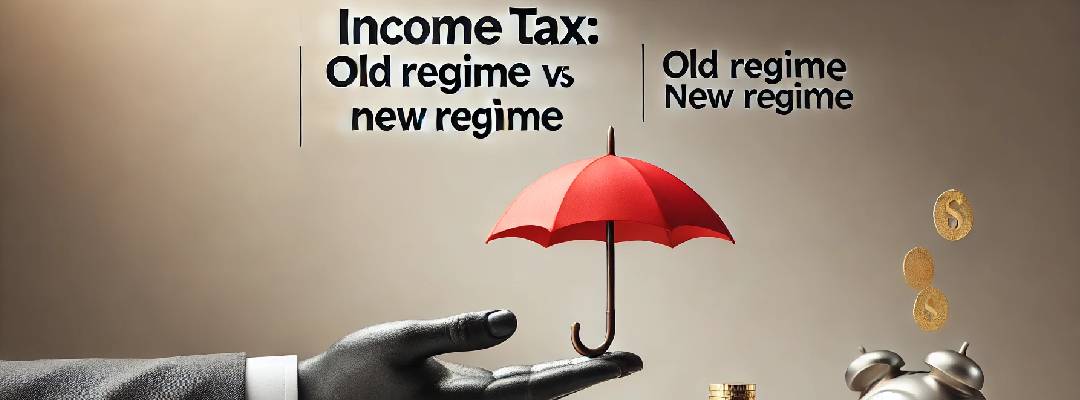With the changes introduced in Budget 2025, taxpayers now face a crucial question: Should they continue with the old tax regime or switch to the new one? The answer depends on your income level, tax-saving investments, and financial goals.
Let’s break it down in a simple way!
Understanding Both Tax Regimes
Old Tax Regime (Before 2020 & Still Available in 2025)
✅ Offers multiple exemptions and deductions, such as:
- Standard Deduction: ₹50,000
- Section 80C: Up to ₹1.5 lakh (PPF, ELSS, EPF, Life Insurance, etc.)
- Section 80D: Medical insurance premiums
- HRA (House Rent Allowance): If you live in a rented house
- LTA (Leave Travel Allowance)
- Home Loan Interest (Section 24b): ₹2 lakh deduction on self-occupied property
- Other deductions (NPS, education loans, etc.)
🚫 But the income tax slabs are higher, making it beneficial only if you use deductions.
New Tax Regime (2025-26)
✅ Lower tax rates but no exemptions or deductions.
✅ Simpler tax filing since there’s no need to track investments.
✅ Higher tax-free income: ₹12 lakh exemption limit vs. ₹7 lakh earlier.
🚫 No tax-saving benefits like 80C, 80D, HRA, and home loan deductions.
Here’s a comparison of tax slabs:
| Income Slab (₹) | Old Tax Regime | New Tax Regime (2025-26) |
| 0 – 2,50,000 | 0% | 0% |
| 2,50,001 – 5,00,000 | 5% | 5% (Rebate Applied) |
| 5,00,001 – 7,50,000 | 20% | 5% (Rebate Applied) |
| 7,50,001 – 10,00,000 | 20% | 10% (Rebate Applied) |
| 10,00,001 – 12,00,000 | 30% | 0% (Rebate Applied) |
| 12,00,001 – 15,00,000 | 30% | 15% |
| 15,00,001 – 20,00,000 | 30% | 20% |
| 20,00,001 – 25,00,000 | 30% | 25% |
| Above 25,00,000 | 30% | 30% |
Which Tax Regime is Better for You?
It depends on how much you invest in tax-saving options. Let’s compare:
| Income (₹) | Tax Under Old Regime (With Deductions) | Tax Under New Regime (2025-26) | Better Option |
| 8,00,000 | ₹0 (After deductions) | ₹0 (Rebate) | Both Same |
| 12,00,000 | ₹55,000 (With ₹2 lakh deductions) | ₹0 (Rebate) | New Regime |
| 16,00,000 | ₹1,95,000 (With deductions) | ₹1,20,000 | New Regime Saves ₹75,000 |
| 18,00,000 | ₹2,55,000 (With deductions) | ₹1,80,000 | New Regime Saves ₹75,000 |
| 22,00,000 | ₹3,45,000 (With deductions) | ₹2,85,000 | New Regime Saves ₹60,000 |
| 26,00,000 | ₹4,35,000 (With deductions) | ₹3,75,000 | New Regime Saves ₹60,000 |
Rule of Thumb:
- If you invest a lot in tax-saving instruments (₹2.5-3 lakh in 80C, 80D, home loan interest, etc.), the old regime might be better.
- If you don’t claim many deductions, the new regime is better because of lower tax rates.
Conclusion: Which One Should You Choose?
- Choose the New Regime if:
✅ Your income is below ₹12 lakh (since no tax is payable).
✅ You don’t want to track deductions and investments.
✅ You prefer a simpler, lower-tax structure. - Choose the Old Regime if:
✅ You actively invest in PPF, ELSS, NPS, home loans, and medical insurance.
✅ Your deductions exceed ₹3 lakh (saving more tax than the new regime).
✅ You prefer maximizing long-term savings through tax benefits.
For most middle-class taxpayers, the new tax regime is better due to lower rates and fewer complexities. However, if you are disciplined with tax-saving investments, the old regime might still work in your favor.
💡 Tip: Use a tax calculator or consult a financial advisor to see what works best for your income and investments.
Would you like a customized tax savings calculation based on your salary? Let me know! 😊





